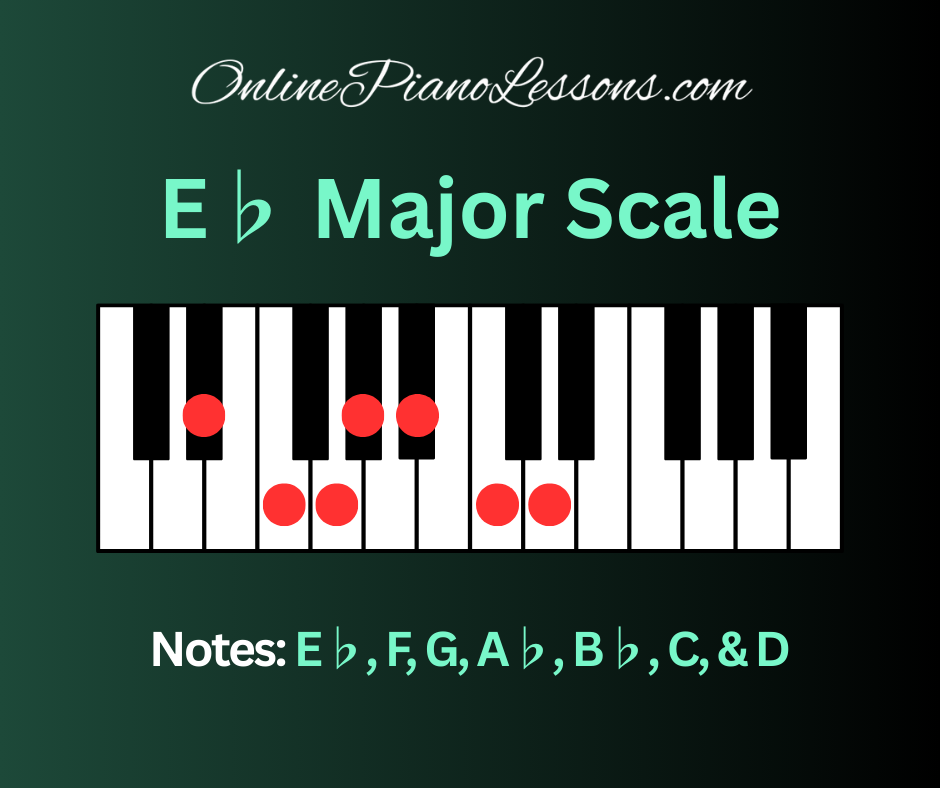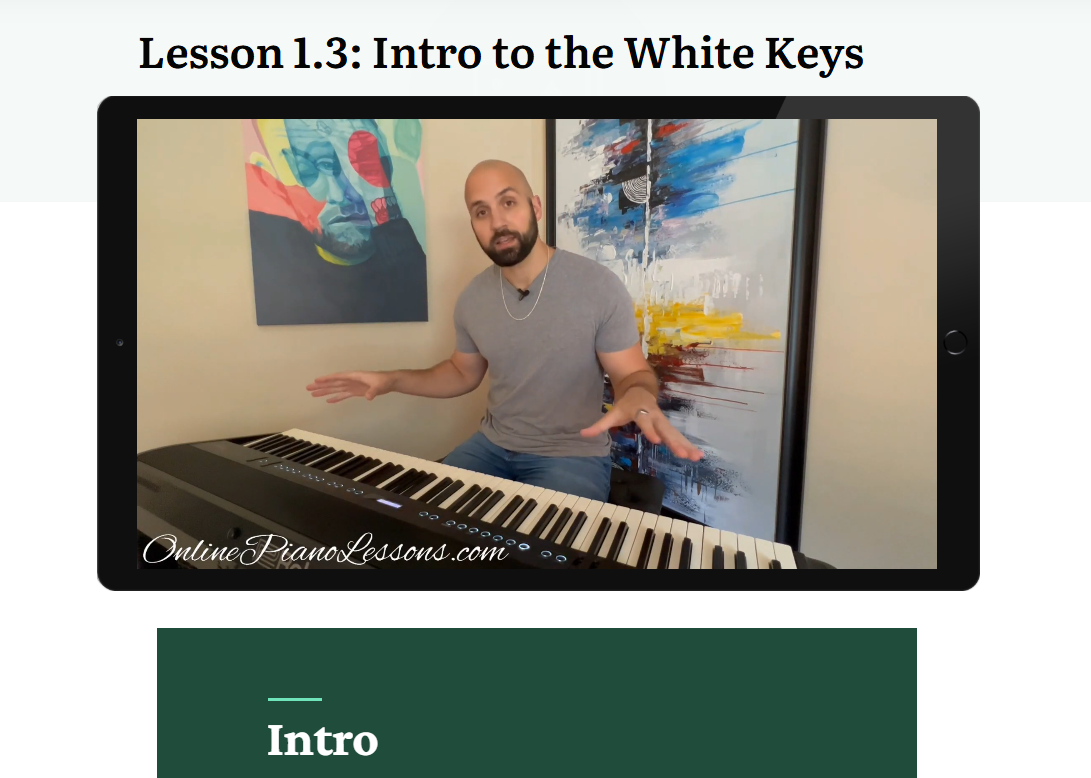
The E flat major scale is a warm, noble, and versatile key that pianists love. Whether you’re practicing scales, learning jazz voicings, or preparing classical repertoire, the E flat major scale (written here both as E flat major scale and E♭ major scale) is essential to your musical toolkit. This guide explains what the E flat major scale is, how to find it on the piano, how it functions harmonically, what it sounds like, practical fingerings and exercises, common repertoire, and tips to make the E♭ major scale truly sing.
Throughout this article I’ll use the terms E flat major scale and E♭ major scale interchangeably so you become comfortable recognizing either name on sheet music and in conversation. Let’s get started.
What Is The E Flat Major Scale?
The E flat major scale is a diatonic major scale that begins on the pitch E♭ and follows the standard major pattern of whole and half steps: whole, whole, half, whole, whole, whole, half. Notationally the E flat major scale has three flats in its key signature: B♭, E♭, and A♭. The notes of the E♭ major scale are:
E♭ – F – G – A♭ – B♭ – C – D – E♭
On the piano, that mixture of black and white keys gives the E flat major scale a comfortable layout and a pleasing sonic character. Learning the E flat major scale develops finger coordination across both black- and white-key territory.
How To Find The E Flat Major Scale On The Piano
Locating the E♭ major scale on the piano is straightforward:
- Find E♭: it’s the black key immediately to the left of E.
- From E♭, step up a whole tone to F, another whole to G, a half to A♭, continue to B♭, C, D, and finally E♭.
The visual pattern on the keyboard—black, white, white, black—helps your hands settle into an ergonomic position. Many pianists find that practicing the E flat major scale improves their comfort with neighboring flat keys such as A♭ and D♭.
The Sound And Character Of The E Flat Major Scale
The E♭ major scale is often described as noble, warm, and lyrical. It has a rich, mellow color that suits Romantic-era music and lush jazz voicings equally well. On the piano the E flat major scale can feel especially resonant in the middle registers; composers choose the E♭ major scale when they want a sound that’s both comfortable for singers and satisfying for group ensembles (wind and brass players often favor E♭ as well).
If you want music that feels broad, heroic, or gently dignified, the E♭ major scale is a natural choice.
Fingering For The E Flat Major Scale (Practical Piano Tips)
Good fingering makes the E flat major scale smooth and even. Below are standard fingerings for a two-octave E♭ major scale. Use these consistently and then experiment for small adjustments based on hand size.
Right hand (ascending, two octaves):
3 – 1 – 2 – 3 – 1 – 2 – 3 | 1 – 2 – 3 – 1 – 2 – 3 – 4
Right hand (descending): reverse the ascending pattern.
Left hand (ascending, two octaves):
4 – 3 – 2 – 1 – 3 – 2 – 1 | 4 – 3 – 2 – 1 – 3 – 2 – 1
Left hand (descending): reverse the ascending pattern.
Practice slowly with a metronome, focusing on even tone and relaxed wrists. Consistent fingering will make the E flat major scale feel automatic under your fingers.
Harmonic Building Blocks: Chords From The E Flat Major Scale
Understanding the chords that come from the E flat major scale helps you harmonize melodies and improvise. The basic triads are:
- I — E♭ major: E♭–G–B♭
- ii — F minor: F–A♭–C
- iii — G minor: G–B♭–D
- IV — A♭ major: A♭–C–E♭
- V — B♭ major: B♭–D–F
- vi — C minor: C–E♭–G
- vii° — D diminished: D–F–A♭
Common progressions you’ll encounter with the E flat major scale include I–vi–IV–V (E♭–Cm–A♭–B♭) and I–V–vi–IV (E♭–B♭–Cm–A♭). These progressions sound rich and natural in the key because of shared tones and smooth voice leading.
Practical Exercises To Master The E Flat Major Scale
Here are focused drills to make the E flat major scale reliable and expressive on the piano:
- Two-Octave Scales: Play hands separately, then together, slowly increasing tempo.
- Arpeggios: Practice E♭ major arpeggios and inversions across two octaves to strengthen hand shapes.
- Broken Chords: Right hand plays scale while left hand outlines broken triads (root–fifth–third).
- Chord Progression Loops: Loop I–vi–IV–V and practice smooth voice-leading and inner voices.
- Melodic Etudes: Compose short two-bar phrases using only E♭ major scale notes to develop musicality.
- Transposition Practice: Take a simple melody and play it in several keys, including E♭ major scale, to build fluency.
Short, regular practice sessions (10–20 minutes focused) are more effective than long, inconsistent stretches. Make the E♭ major scale part of your daily routine.
Repertoire That Highlights The E Flat Major Scale
Many well-known works use the E flat major scale or sections in E♭ major, demonstrating its versatility:
- Beethoven — “Eroica” Symphony (themes and horn calls often relate to E♭)
- Chopin — Nocturne in E♭ Major, Op. 9 No. 2 (lyrical E♭ writing)
- Rachmaninoff — Prelude in E♭ Major (lush harmonic language)
- Jazz standards and ballads frequently favor E♭ major for horn-friendly keys
Learning pieces in and around the E flat major scale will deepen your musical understanding and technique.
Common Pitfalls And How To Avoid Them
- Rushing Thumb Crossings: Slow practice is crucial when the thumb moves under; keep motion economical.
- Unreliable Fingering: Use stable fingerings and avoid changing them mid-practice.
- Over-Pedaling: The E♭ major scale’s warmth can be muddied by heavy pedal use; change pedal cleanly.
- Ignoring Inner Voices: When practicing progressions, sing or hum inner notes to develop awareness of texture.
Addressing these pitfalls early saves time and builds better habits when working with the E♭ major scale.
Why Every Pianist Should Learn The E Flat Major Scale
Mastering the E flat major scale offers real benefits:
- Improves comfort across black and white keys
- Builds a foundation for repertoire in flat keys
- Strengthens harmonic and improvisational skills
- Enhances expressive capabilities on the piano
Because so many important works and jazz standards relate to E♭, fluency in the E flat major scale is practical and musically rewarding.
FAQ
How many flats are in the E♭ major scale?
The E flat major scale has three flats: B♭, E♭, and A♭.
Is E♭ major difficult to play on the piano?
No—many pianists find E♭ comfortable; the mix of black and white keys supports smooth fingering and legato.
Which chords come from the E flat major scale?
The primary triads are E♭ major (I), F minor (ii), G minor (iii), A♭ major (IV), B♭ major (V), C minor (vi), and D diminished (vii°).
Should beginners practice the E flat major scale early?
Yes. Early exposure builds facility in flat keys and improves overall technique.
How can I make the E flat major scale sound musical, not mechanical?
Practice phrasing, dynamics, and articulation; treat scale practice as musical exercises, not just finger drills.





 Hi, I'm Thomas, Pianist Composer,
Hi, I'm Thomas, Pianist Composer,  I love playing piano, creating new melodies and songs, and further developing my online piano course and making updates/additions to my site OnlinePianoLessons.com!
I love playing piano, creating new melodies and songs, and further developing my online piano course and making updates/additions to my site OnlinePianoLessons.com!  Now that is what I call fun!
Now that is what I call fun!





